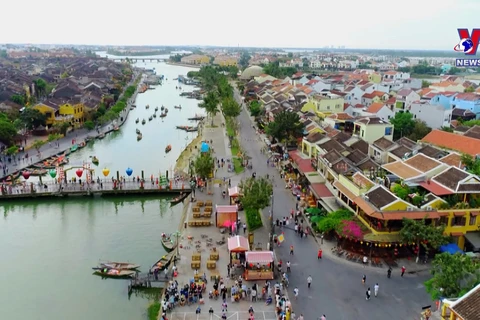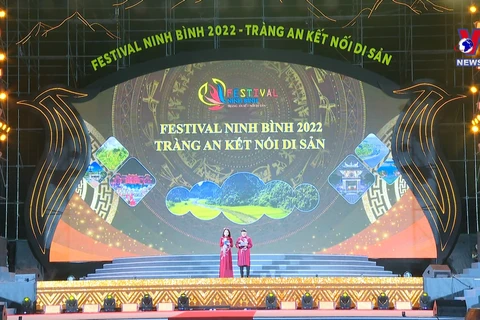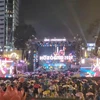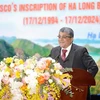 On September 27, 2012, the Prime Minister issues a decision recognising the Lam Kinh historical, cultural, architectural, and artistic relic in Thanh Hoa province as a special national site. Since then, Lam Kinh has seen dramatic changes in scale and appearance, becoming an attractive destination for domestic and foreign tourists. (Photo: VNA)
On September 27, 2012, the Prime Minister issues a decision recognising the Lam Kinh historical, cultural, architectural, and artistic relic in Thanh Hoa province as a special national site. Since then, Lam Kinh has seen dramatic changes in scale and appearance, becoming an attractive destination for domestic and foreign tourists. (Photo: VNA)  Poetry on Hue royal architecture is the third documentary heritage of the Nguyen Dynasty recognised as a World Documentary Heritage. It is the fifth cultural heritage from the former imperial capital of Hue to be honoured and listed by UNESCO. Hue has become a “One destination, 5 heritage” tourist destination. (Photo: VNA)
Poetry on Hue royal architecture is the third documentary heritage of the Nguyen Dynasty recognised as a World Documentary Heritage. It is the fifth cultural heritage from the former imperial capital of Hue to be honoured and listed by UNESCO. Hue has become a “One destination, 5 heritage” tourist destination. (Photo: VNA)  Vietnam’s largest ancient “Xoe” performance, “Xoe Thai”, is recognised by UNESCO this year as a Representative of Intangible Cultural Heritage of Humanity. (Photo: VNA)
Vietnam’s largest ancient “Xoe” performance, “Xoe Thai”, is recognised by UNESCO this year as a Representative of Intangible Cultural Heritage of Humanity. (Photo: VNA)  The Central Highlands’ gong cultural space is listed by UNESCO as a Masterpiece of Oral and Intangible Cultural Heritage of Humanity in 2005 and appears on the Representative List of Intangible Cultural Heritage of Humanity in 2008. (Photo: VNA)
The Central Highlands’ gong cultural space is listed by UNESCO as a Masterpiece of Oral and Intangible Cultural Heritage of Humanity in 2005 and appears on the Representative List of Intangible Cultural Heritage of Humanity in 2008. (Photo: VNA)  “Don ca tai tu” music is a typical folk art form from Vietnam’s southern region and in 2013, it is added to the Representative List of Intangible Cultural Heritage of Humanity. (Photo: VNA)
“Don ca tai tu” music is a typical folk art form from Vietnam’s southern region and in 2013, it is added to the Representative List of Intangible Cultural Heritage of Humanity. (Photo: VNA)  Added in 2009 to the List of Intangible Cultural Heritage in Need of Urgent Safeguarding, “Ca tru” is a complex form of sung poetry found in the north of Vietnam, using lyrics written in traditional Vietnamese poetic forms. (Photo: VNA)
Added in 2009 to the List of Intangible Cultural Heritage in Need of Urgent Safeguarding, “Ca tru” is a complex form of sung poetry found in the north of Vietnam, using lyrics written in traditional Vietnamese poetic forms. (Photo: VNA) VNA























